2025-10-10 18:45:57
From Mine to Blockchain: An Inside Look at Ayni Gold with CTO Daniel C. Tschinkel
Gold has been on a remarkable run in 2025, steadily climbing through the summer and reaching new heights in September, with prices now hovering around $3,859 per ounce. This surge reflects a mix of persistent inflation, shifting interest-rate expectations, and continued central bank accumulation, underscoring gold’s enduring appeal as a safe-haven asset. Against this backdrop, Ayni Gold is bringing a fresh approach to gold mining, bridging traditional extraction with blockchain innovation. In an exclusive conversation, we speak with Daniel C. Tschinkel, CTO of Ayni Gold, about how the project tokenizes real-world gold production and what it means for investors looking to participate in this evolving market. CryptoDaily: Hi Daniel, it’s great to have you with us. So, tell us a bit about yourself — how did your journey in blockchain lead you to join Ayni Gold? Daniel C. Tschinkel: I have always been fascinated by how things work at their core. Since my younger days, I spent most of my time surrounded by computers — disassembling, experimenting, and putting them back together just to understand the essence of how everything connects. That curiosity naturally evolved into a deeper passion for technology and systems thinking. When I first discovered Bitcoin, I immediately felt the same pull. I needed to understand it from every angle — technically, economically, and philosophically — and that became my rabbit-hole moment. It started with mining. I built rig after rig, optimizing every setup to squeeze out more efficiency. Over time, my interest expanded to the broader blockchain ecosystem, especially when I realized how decentralized finance could completely reshape our financial infrastructure. After experiencing several market cycles — each one aging me about forty years in eight — I came to understand that the next major evolution in blockchain would be the tokenization of real-world assets. That is where Ayni Gold comes in. Having worked previously with one of the largest Bitcoin mining companies that successfully tokenized hashrate, I saw firsthand that almost anything tangible can be represented digitally. Ayni Gold represents that next step, bridging the physical world of gold mining with the digital economy, creating access for participants globally. For me, joining Ayni was about contributing to something meaningful — making real assets borderless and accessible through blockchain. I truly believe we are on the right path to achieving that vision. CD: That’s fascinating. You mentioned Bitcoin mining earlier — so how did the idea of tokenizing gold mining actually come about, and who do you see as the ideal participant for this project? Daniel C. Tschinkel: The idea really came from watching tokenization work successfully in other areas, especially in Bitcoin mining where hashrate was tokenized and fractionalized. That showed me that it is possible to take something complex and physical and make it accessible to a much broader audience through blockchain. Gold mining, in many ways, is a perfect fit for this approach because it is an asset people already understand and value. The commercial potential lies in opening a completely new way for people to participate in a traditionally closed market. Until now, access to mining profits or physical gold production was limited to high-net-worth individuals or institutional investors. Through Ayni Gold, we are changing that. This project is built for everyone — from individual miners who want exposure to gold through a transparent blockchain model, to funds looking for stable, asset-backed rewards in the digital space. At its core, Ayni Gold is about inclusion and financial equality. It is about giving people the opportunity to participate in something real and tangible, without the barriers that have always existed in traditional finance. That is where I see the true power and commercial potential of what we are building. CD: Interesting — given that context, why did you choose Peru, and what made Minerales San Hilario the right partner for this project? Daniel C. Tschinkel: Peru was an easy choice for us because it has one of the richest gold mining heritages in the world. The country is consistently among the top global producers of gold and has a long tradition of responsible mining operations supported by a well-established legal framework. Beyond its mineral wealth, Peru also offers stable mining infrastructure, skilled local labor, and a clear regulatory environment — all essential for building a sustainable and transparent operation. Minerales San Hilario, a licensed Peruvian concession holder, became our partner of choice because it already holds a valid gold mining concession in the region, secured in 2023. In many other tokenized mining projects, the biggest point of failure comes from relying on external operators. By operating directly via licensed concession, we remove that risk completely. Gold mining process at the Minirales San Hilario site. Source: ayni.gold This structure allows us to ensure that every gram of gold produced is verifiable, efficiently managed, and transparently linked to the digital layer of our platform. It is a model built around control, accountability, and long-term sustainability — which is ultimately what gives supporters confidence in the project. CD: I see, that makes sense. Can you walk us through how the AYNI token is actually connected to the gold being mined? Daniel C. Tschinkel: The connection between our physical gold production and the AYNI token is built on transparency, verifiable data, and direct representation of real output. Each token is linked to the actual gold extraction process, not just to a theoretical reserve. In simple terms, the tokens represent a digital reflection of the mine’s production power, allowing us to bridge the real and digital worlds in a measurable way. Gold mined by Minerales San Hilario is fully recorded, verified, and audited. Once the production data is confirmed, the system calculates the portion of gold that corresponds to the tokenized segment of our operations. That portion forms the basis for distributing value to token holders through digital settlement in PAXG — a regulated digital asset backed by physical gold. This ensures that what happens on the ground is directly tied to what is reflected on the blockchain. The process is designed so that the token does not rely on speculation or future promises. It is anchored in the real productivity of the mine. This creates a self-sustaining economic loop where physical extraction drives digital value, and token holders benefit from something tangible that can be tracked from the mine all the way to the blockchain. It is a structure that prioritizes accountability, clarity, and long-term stability. CD: That’s very clear. So, what makes Ayni Gold different from the other gold-backed crypto projects out there? Daniel C. Tschinkel: What truly sets Ayni Gold apart is that we do not rely on third parties at any stage of the process. Most gold-backed crypto projects depend on external suppliers, refineries, or custodians that sit between the project and the actual source of gold. This creates a chain of dependencies and risks that are hard to verify. In our case, the mining concession is owned and operated by our own company through Minerales San Hilario. This gives us complete control over extraction, transparency over production data, and a direct physical foundation for every digital token issued. Another important difference is that our model is not just about backing a token with stored gold — it is about tokenizing the production power of a real mine. That means value is generated continuously from real-world operations rather than simply being linked to static gold reserves sitting in a vault. It is an active, productive system that connects token holders to a living, breathing operation instead of a passive asset. And lastly, we are working with an existing, operational gold mine. Most projects first raise funds and then start searching for a suitable mining site — which, as we have seen, often ends unsuccessfully. We are building on an already producing asset, which gives us a much stronger and more reliable foundation from the very beginning. Finally, we put a strong focus on accountability and verifiability. Every stage, from mining output to digital settlement in PAXG, is recorded, auditable, and traceable on-chain. This combination of full control, real production linkage, and transparent reporting is what makes Ayni fundamentally different from the many projects that claim to be gold-backed but operate with limited visibility. CD: Understood. And why did you decide to distribute rewards in PAXG instead of AYNI or stablecoins like USDT or USDC? Daniel C. Tschinkel: Rewards are currently distributed only in PAXG quarterly, and that decision was very intentional. PAXG is issued by Paxos, one of the most reputable and regulated entities in the digital asset space. It has the longest and strongest track record among all gold-backed stablecoins, with every token fully backed by allocated physical gold stored in LBMA-accredited vaults. For us, this choice was about trust and transparency. At the end of the day, users do not just want digital rewards — they want exposure to real gold and the option to redeem it if they choose. With PAXG, they can do exactly that. They do not have to rely solely on us as the issuer or take our word for it — the redeemability and custody are handled directly by Paxos, an independent and regulated third party. It also aligns perfectly with our mission. Ayni Gold is about connecting real-world assets to blockchain in a secure and transparent way. By using PAXG as the settlement token, we extend that same principle beyond our own ecosystem — giving users confidence that their rewards are backed by real, verifiable gold and can be freely used, traded, or redeemed anywhere PAXG is supported. And who knows, maybe there is another special reason why we chose PAXG. It might have something to do with the fact that PAXG can act as great collateral in the DeFi space. But for now, I cannot disclose more until we are ready to announce some of the additional features we have been working on. CD: Got it, thanks! Could you also explain how exactly rewards for token holders are calculated, considering production costs, gold prices, and operational expenses? Daniel C. Tschinkel: The rewards for token holders come directly from the mine’s real productivity and are generated after factoring in all operational expenses and production costs. In simple terms, once gold is extracted and refined, Minerales San Hilario records the total output. From that, we deduct the operational costs of mining, processing, logistics, and success fees. What remains represents the net reward of the mine — and that is what is distributed proportionally to token holders in the form of PAXG. This approach ensures that the distribution reflects true economic activity rather than speculative or artificial yields. Because the tokenized portion of the mine’s capacity is predefined, rewards are tied to actual production volumes and market gold prices. When the mine performs efficiently and gold prices rise, rewards increase naturally. It is a model that is both sustainable and transparent. Token holders essentially share in the measurable performance of a productive real-world asset — without needing to trust intermediaries or rely on promises disconnected from reality. Everything is verifiable, from the production records at the mine to the final settlement on the blockchain. CD: That’s very transparent. From an investor’s point of view, why might someone choose AYNI over just holding PAXG or physical gold? Daniel C. Tschinkel: From this perspective, the real advantage of holding AYNI instead of only PAXG or physical gold is participation. With our model, token holders who stake AYNI can receive rewards that come directly from the production of a real gold mine. That opportunity has traditionally been reserved for the ultra-wealthy or institutional players with access to private mining ventures. We are changing that by opening the doors for anyone to take part in the value creation that happens at the source. Ayni Gold staking model. Source: ayni.gold It is similar to the difference between owning Bitcoin and mining it. Holding the asset gives you exposure to its price, but participating in its creation gives you an entirely new dimension of value. AYNI offers that same type of access within the gold sector. At the same time, I believe that diversification remains key. There is no reason to see AYNI, PAXG, or physical gold as competing choices — each has a role. Hold physical gold for security, hold PAXG for liquidity and ease of transfer, and hold AYNI for exposure to the productive side of gold through a model that generates stable, transparent rewards. The future belongs to those who combine the strengths of both worlds — the tangible and the digital — and that is exactly what AYNI is designed to make possible. CD: I see, that’s helpful. After the OTC phase, how will you make sure AYNI remains liquid and tradable on the open market? Daniel C. Tschinkel: After the OTC phase, we are focused on ensuring that AYNI has both stability and accessibility in the open market. On the decentralized side, we will be launching our first liquidity pool on Uniswap. This will allow users to trade AYNI in a fully transparent and decentralized way, directly on-chain, while also setting the foundation for reliable price discovery. The initial liquidity will be provided by the company to guarantee healthy market depth and minimize price volatility in the early stages. In parallel, we are working toward listing AYNI on a centralized exchange, with MEXC as our initial partner of choice. MEXC offers the right balance between accessibility, liquidity, and global exposure, and it is a strong starting point before we move toward larger Tier-1 exchanges later on. To further strengthen the market, we will also collaborate with a professional market maker to manage liquidity across both exchanges, ensuring tight spreads and stable trading conditions from day one. The overall goal is to make AYNI easily tradable while maintaining a solid price foundation that reflects the real value of the project. We want users to be able to buy, sell, and interact with the token freely, without the instability that often comes with new listings. It is about building a healthy, sustainable market that grows naturally with demand. CD: And in terms of risk management, what happens if gold prices drop below your break-even point? How resilient is the model in such a case? That is a great question because it touches on one of the key principles of sustainable mining economics. If gold prices were to fall below our operational break-even point, the distribution of rewards to token holders would temporarily pause until prices recover. This mechanism ensures that the project remains financially healthy and that we don’t distribute from a loss position. The concept is similar to how Bitcoin miners operate: when the BTC price drops below the cost of electricity and maintenance, mining rigs are shut down until profitability resumes. It’s a self-regulating mechanism that protects the ecosystem from depletion during market downturns. Now, gold is historically much more stable than Bitcoin or most other commodities. A correction significant enough to push below our break-even would have broad macroeconomic implications — central banks, ETFs, and entire industries rely on gold’s stability. In such a case, many higher-cost mines would temporarily close, reducing global supply. This supply reduction, combined with steady or increasing demand, tends to push prices back up, restoring balance. Our model is designed with this cyclic resilience in mind. Because we operate with strong cost efficiency and full control of the mining process, we can sustain lower price environments longer than many peers. Once the market stabilizes, production — and therefore quarterly reward distribution — resumes automatically. CD: Understood. How involved is the Ayni Gold team in the daily operations of the mine? Or do you keep these responsibilities separate? Daniel C. Tschinkel: The tasks are kept strictly separate, and that separation is one of the reasons why the project runs so efficiently. The mining operation in Peru is managed entirely by the local team at Minerales San Hilario, which handles all on-site responsibilities such as extraction, processing, logistics, and compliance with local environmental and safety standards. They are specialists with years of experience in the field, and they ensure that everything related to gold production operates smoothly and in line with regulations. The Ayni Gold team, on the other hand, focuses on the digital and financial layer — tokenization, technology development, blockchain integration, and community relations. We maintain close coordination with the mining team, receiving verified production data and audit reports, but we do not interfere with the operational side of the mine. This structure ensures both independence and accountability: the mining team focuses on producing gold, while we focus on turning that production into transparent, verifiable on-chain value for our community. It is a balance that combines traditional mining expertise with cutting-edge digital innovation, allowing both sides to do what they do best without overlap or conflict of interest. CD: Thanks, that clarifies a lot. Looking at Ayni Gold’s roadmap, how is the OTC round going, and when will retail participants get access? What will the minimum entry amount be? Daniel C. Tschinkel: The OTC round is progressing very well. We are seeing strong interest across the board, both from private and institutional players who have already expressed their intent to participate. This early phase is important for us because it allows strategic partners and long-term supporters to join before the public launch, helping to establish a solid foundation for liquidity and market confidence. At the moment, the minimum purchase amount for OTC participation is 10,000 dollars’ worth of Ayni tokens. This structure ensures that the initial round is composed of committed holders who understand the long-term vision of what we are building. Once we move into the retail phase, which is planned for October, the minimum entry threshold will drop significantly to 100 dollars. This is where Ayni’s true inclusivity comes into play. We want to give people around the world — including those in financially less privileged regions — the ability to participate in something that has traditionally been out of reach. Gold mining has always been reserved for institutions or the wealthy few, and our mission is to change that by making access simple, digital, and transparent for everyone. CD: Looking ahead to the near future, what are the key milestones and priorities for the Ayni team going into 2026? Daniel C. Tschinkel: Looking ahead, our roadmap for 2026 is very clear and ambitious. After successfully launching our MVP for OTC clients, the next major milestone is to open the full Ayni platform to everyone. This will allow users to have complete control over their assets in a transparent, structured, and compliant way. Retail participants will be able to onboard easily using both crypto and credit card payments, making participation as seamless as possible. Following that, we are preparing to release our mobile application, which will make the experience even more accessible and intuitive for users globally. By the beginning of 2026, we plan to initiate the formation of a DAO structure, giving our community the ability to vote, contribute, and participate directly in the evolution of the ecosystem. For us, decentralization is not just a technical feature — it’s part of our philosophy to give everyone a voice in shaping the project they are part of. On the mining side, Minerales San Hilario is already in the process of expanding its current concession area and acquiring additional ones, steadily increasing production capacity. We expect 2026 to be a very promising year for our mining operations, both in terms of scale and efficiency. Overall, we see the year ahead as a defining period for Ayni — where technology, transparency, and real-world production come together to create something lasting and valuable for everyone involved. CD: Thanks a lot, Daniel, for taking the time to chat with us — we really appreciate it, and wish you all the best with Ayni Gold! Disclaimer: This article is provided for informational purposes only. It is not offered or intended to be used as legal, tax, investment, financial, or other advice.


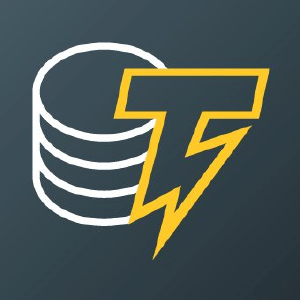
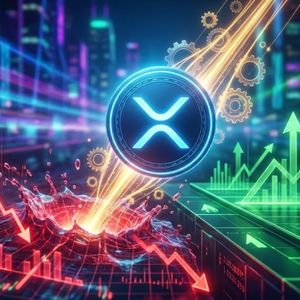
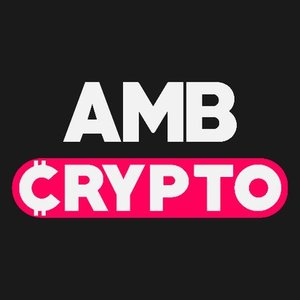
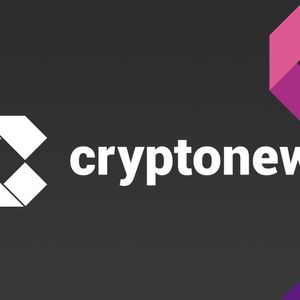

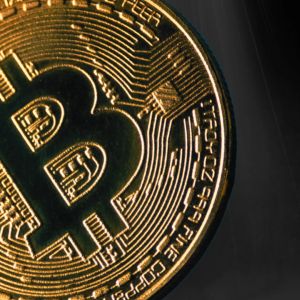

![[LIVE] Crypto News Today: Latest Updates for Dec. 22, 2025 – Sector Rotation Pushes NFTs Higher; RWA and DeFi Extend Gains [LIVE] Crypto News Today: Latest Updates for Dec. 22, 2025 – Sector Rotation Pushes NFTs Higher; RWA and DeFi Extend Gains](https://resources.cryptocompare.com/news/52/56165057.jpeg)